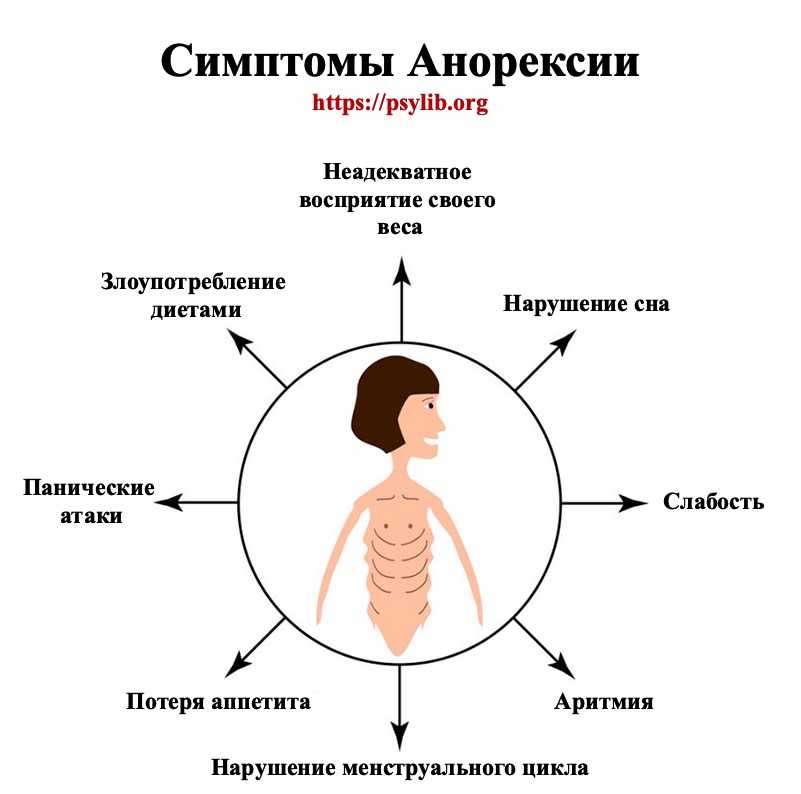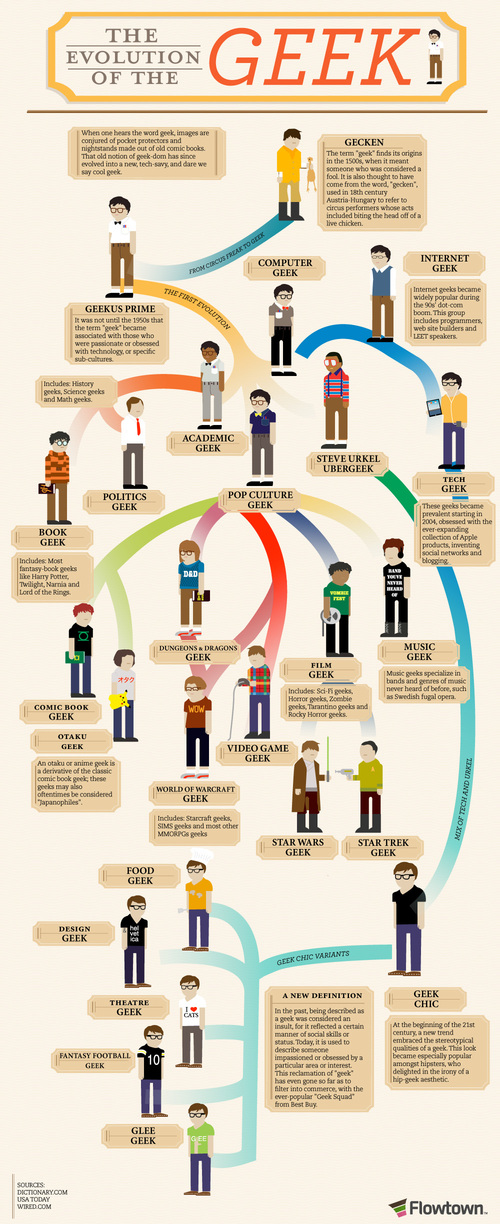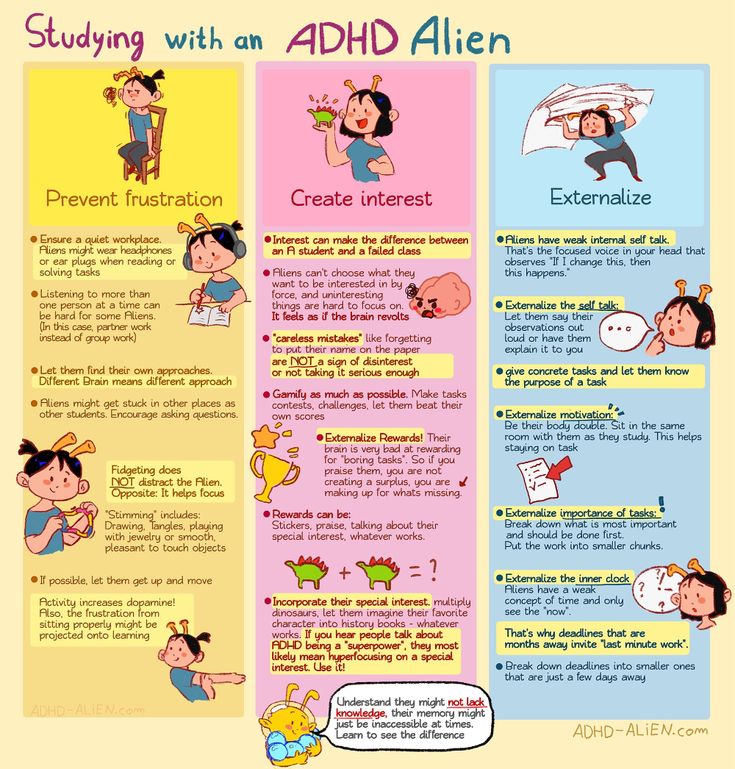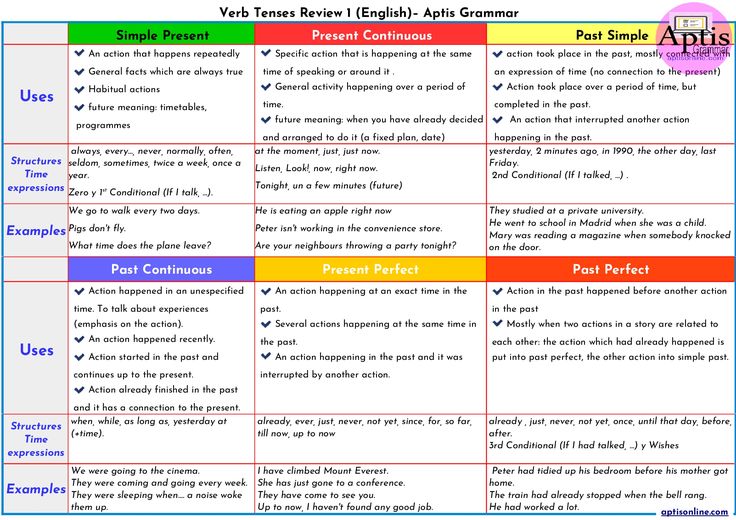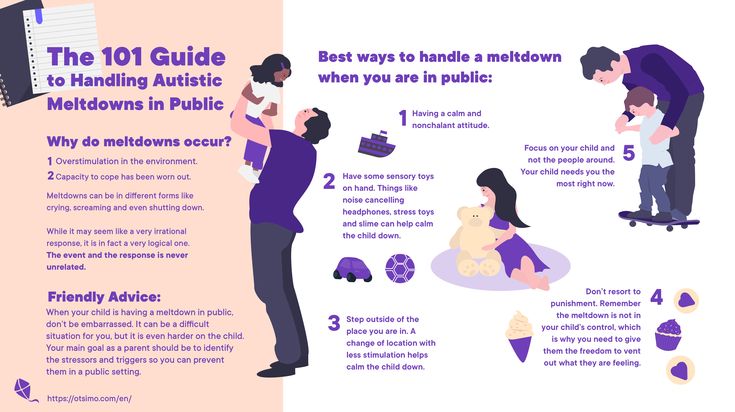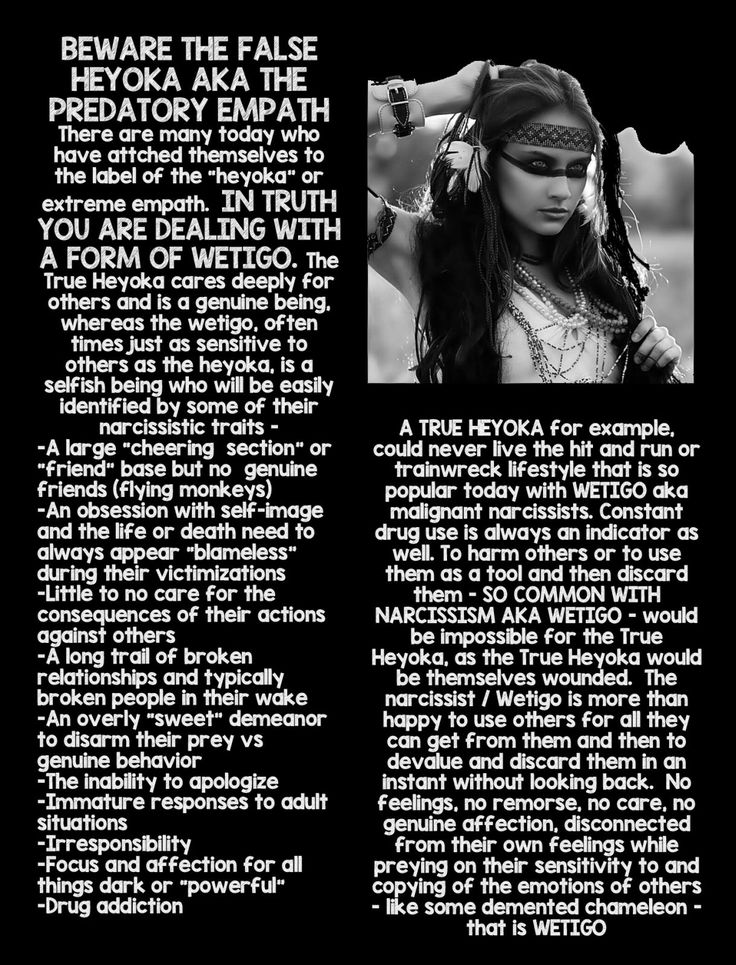Riso hudson personality types
Enneagram Test- The Riso-Hudson Type Indicator (Version 2.0)
Enneagram Test- The Riso-Hudson Type Indicator (Version 2.0)
Please note that this test is only for personal use, under agreement
with the Enneagram Institute. For any other purpose, refer to the original
publication,
Discovering Your Personality Type: The Enneagram
Questionaire by Don Richard Riso. His other books include
Personality Types - revised edition (1996), Understanding the Enneagram (1990), Discovering Your Personality Type
(1995), and Enneagram Transformations (1993). The author would also like you to know
that the full RHETI is now available on-line at www.EnneagramInstitute.com
for $10 with credit card (secured server).
There are 38 questions in this sample test. For each of them, select the answer that applies to you. You may skip questions that really do not apply, but do not avoid questions simply because they are difficult to answer. This test typically takes 5-10 minutes to complete.
To ensure that the scoring server is working, you might want to check by answering a few questions, then press SCORE TEST. If you have problem getting the entire test, try reloading (refreshing) the page.
- I've been
- romantic and imaginative.
- pragmatic and down to earth.
- I have tended to
- take on confrontations.
- avoid confrontations.
- I have typically been
- diplomatic, charming, and ambitious.
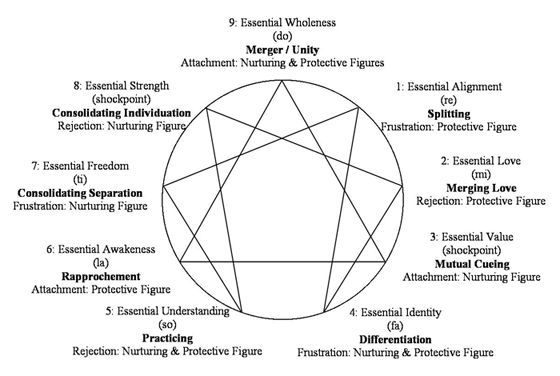
- direct, formal, and idealistic.
- diplomatic, charming, and ambitious.
- I have tended to be
- focused and intense.
- spontaneous and fun-loving.
- I have been a
- hospitable person and have enjoyed welcoming new friends into my life.
- private person and have not mixed much with others.
- Generally, it's been
- easy to "get a rise" out of me.
- difficult to "get a rise" out of me.
- I've been more of a
- "street-smart" survivor.
- "high-minded" idealist.
- I have
- needed to show affection to people.
- preferred to maintain a certain distance with people.
- When presented with a new experience, I've usually asked myself if it would be
- useful to me.
- enjoyable.
- I have tended to focus too much on
- myself.

- others.
- myself.
- Others have depended on my
- insight and knowledge.
- strength and decisiveness.
- I have come across as being too
- unsure of myself.
- sure of myself.
- I have been more
- relationship-oriented than goal-oriented.
- goal-oriented than relationship-oriented.
- I have
- not been able to speak up for myself very well.
- been outspoken--I've said what others wished they had the nerve to say.
- It's been difficult for me to
- stop considering alternatives and do something definite.
- take it easy and be more flexible.
- I have tended to be
- hesitant and procrastinating.
- bold and domineering.
- My
- reluctance to get too involved has gotten me into trouble with people.
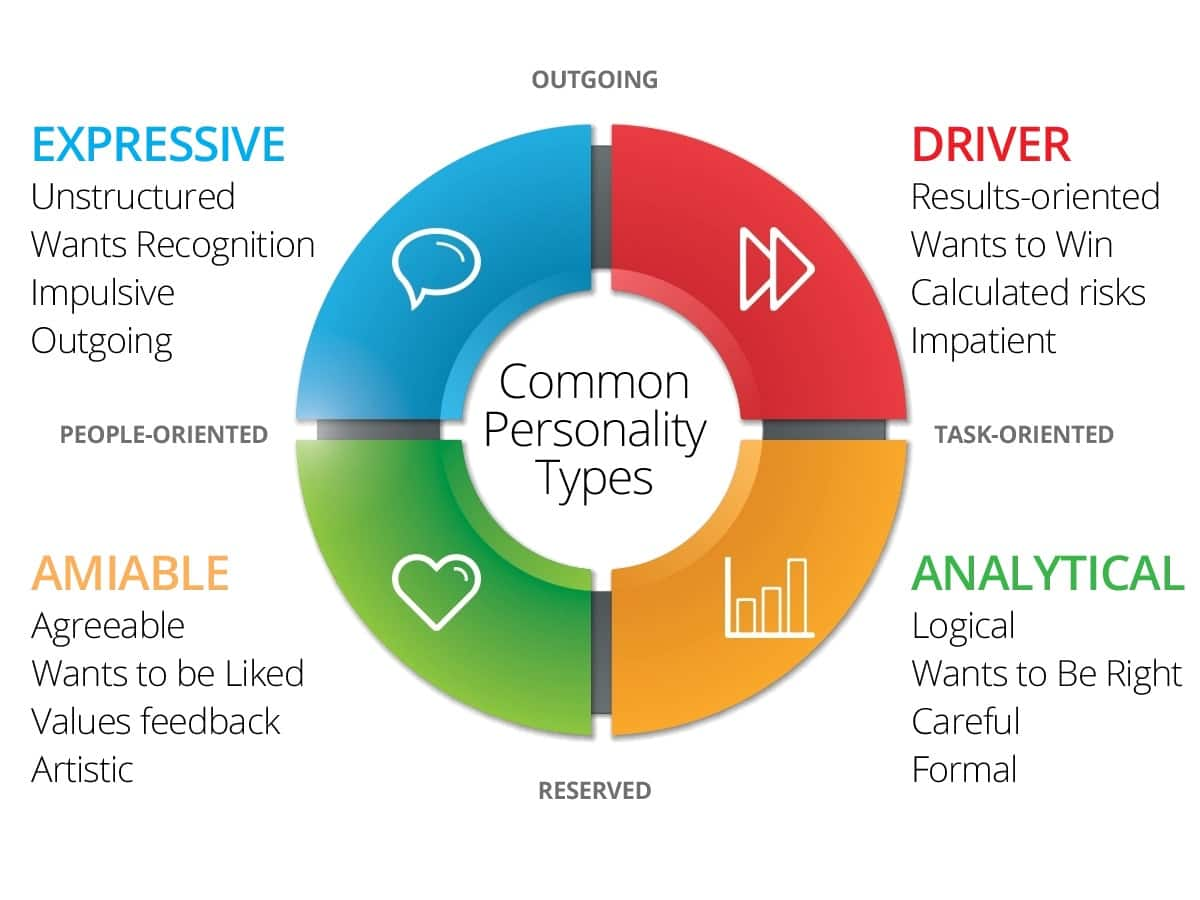
- eagerness to have people depend on me has gotten me into trouble with them.
- reluctance to get too involved has gotten me into trouble with people.
- Usually, I have
- been able to put my feelings aside to get the job done.
- needed to work through my feelings before I could act.
- Generally, I have been
- methodical and cautious.
- adventurous and taken risks.
- I have tended to be a
- supportive, giving person who enjoys the company of others.
- serious, reserved person who likes discussing issues.
- I've often felt the need to
- be a "pillar of strength."
- perform perfectly.
- I've typically been interested in
- asking tough questions and maintaining my independence.
- maintaining my stability and peace of mind.
- I've been too
- hard-nosed and skeptical.
- soft-hearted and sentimental.
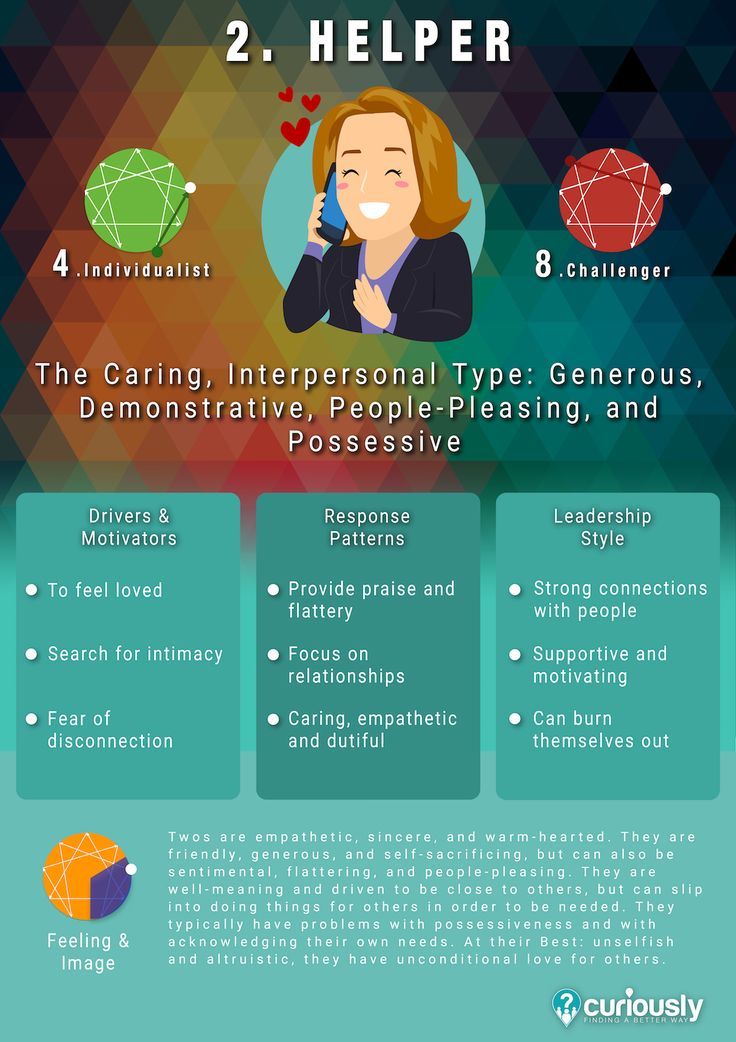
- I've often worried that
- I'm missing out on something better.
- if I let down my guard, someone will take advantage of me.
- My habit of
- being "stand-offish" has annoyed people.
- telling people what to do has annoyed people.
- Usually, when troubles have gotten to me, I have
- been able to "tune them out."
- treated myself to something I've enjoyed.
- I have
- depended upon my friends and they have known that they can depend on me.
- not depended on people; I have done things on my own.
- I have tended to be
- detached and preoccupied.
- moody and self-absorbed.
- I have liked to
- challenge people and "shake them up."
- comfort people and calm them down.
- I have generally been an
- outgoing, sociable person.

- earnest, self-disciplined person.
- outgoing, sociable person.
- I've usually
- been shy about showing my abilities.
- liked to let people know what I can do well.
-
- Pursuing my personal interests has been more important to me than having comfort and security.
- Having comfort and security has been more important to me than pursuing my personal interests.
- When I've had conflict with others, I've
- tended to withdraw.
- rarely backed down.
- I have
- given in too easily and let others push me around.
- been too uncompromising and demanding with others.
- I've been appreciated for my
- unsinkable spirit and great sense of humor.
- quiet strength and exceptional generosity.
- Much of my success has been
- due to my talent for making a favorable impression.

- achieved despite my lack of interest in developing "interpersonal skills."
For statistical purpose only:
- due to my talent for making a favorable impression.
- I am
- male.
- female.
- My MBTI Type is
Unknown INTP INTJ INFP INFJ ISTP ISTJ ISFP ISFJ ENTP ENTJ ENFP ENFJ ESTP ESTJ ESFP ESFJ
Enneagram of 9 Personalities - Explained
What is the Enneagram of 9 Personalities?
Written by Jason Gordon
Updated at May 14th, 2022
-
Marketing, Advertising, Sales & PR
Principles of Marketing Sales Advertising Public Relations SEO, Social Media, Direct Marketing
-
Accounting, Taxation, and Reporting
Managerial & Financial Accounting & Reporting Business Taxation
- Professionalism & Career Development
-
Law, Transactions, & Risk Management
Government, Legal System, Administrative Law, & Constitutional Law Legal Disputes - Civil & Criminal Law Agency Law HR, Employment, Labor, & Discrimination Business Entities, Corporate Governance & Ownership Business Transactions, Antitrust, & Securities Law Real Estate, Personal, & Intellectual Property Commercial Law: Contract, Payments, Security Interests, & Bankruptcy Consumer Protection Insurance & Risk Management Immigration Law Environmental Protection Law Inheritance, Estates, and Trusts
-
Business Management & Operations
Operations, Project, & Supply Chain Management Strategy, Entrepreneurship, & Innovation Business Ethics & Social Responsibility Global Business, International Law & Relations Business Communications & Negotiation Management, Leadership, & Organizational Behavior
-
Economics, Finance, & Analytics
Economic Analysis & Monetary Policy Research, Quantitative Analysis, & Decision Science Investments, Trading, and Financial Markets Banking, Lending, and Credit Industry Business Finance, Personal Finance, and Valuation Principles
- Courses
+ More
Table of Contents
What is the Enneagram of 9 Personalities?What is the Riso-Hudson Enneagram Type Indicator (RHETI)?What is the Dominant and 2 Next Preferred Personality Types?What are the Nine Enneagram Personality Types?What are the 3 Enneagram Centers? What is the Instinctive Center of the Enneagram? What is the Feeling Center of the Enneagram? What is the Thinking Center of the Enneagram?
The Enneagram of Personalities, first introduced by Gurdjief (1866 – 1949), identifies 9 distinct personality types and characteristic emotional states to which the personalities are connected.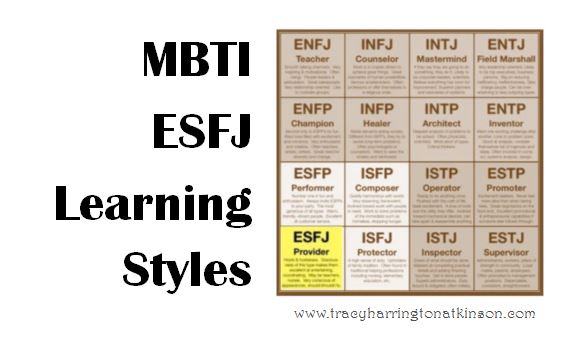
The Riso-Hudson Enneagram Type Indicator (RHETI) is a questionnaires that allows the user to understand what enneagram personality type describes you best.
What is the Dominant and 2 Next Preferred Personality Types?The Enneagram identifies one dominant type of innate personality type. Individuals also tend to show attributes of two other personality types - particularly when stressed.
What are the Nine Enneagram Personality Types?Let’s understand each of the 9 personality types:
- The REFORMER: purposeful, self-controlled, and perfectionistic.
- The HELPER: generous, demonstrative, people-pleasing, and possessive.
- The ACHIEVER: adaptable, excelling, driven, and image-conscious.
- The INDIVIDUALIST: expressive, dramatic, sagacious, and self-absorbed.
- The INVESTIGATOR: perceptive, innovative, secretive, and isolated.
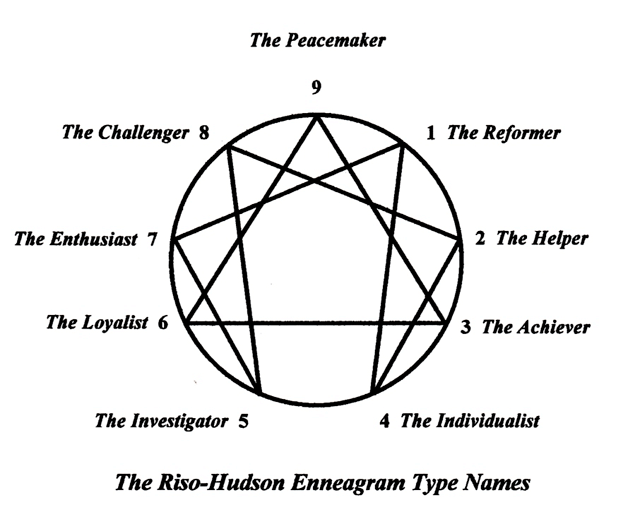
- The LOYALIST: engaging, responsible, anxious, and suspicious.
- The ENTHUSIAST: spontaneous, versatile, acquisitive, and scattered.
- The CHALLENGER: self-confident, decisive, willful, and confrontational.
- The PEACEMAKER: receptive, reassuring, complacent, and resigned.
The Enneagram personality types are divided into three Centers:
- Instinctive,
- Feeling, and
- Thinking center.
Each center highlights a type of emotion, which characterizes a personality type by how each personality type deals with this internal tendency.
What is the Instinctive Center of the Enneagram?The Instinctive Center is characterized by anger or rage, and covers type 1,9 and 8:
1. Types one (reformers) try repressing or controlling their anger and instinctual energies. They have a highly developed inner critic.
9. Types nine (peacemakers) deny their anger and instinctual energies.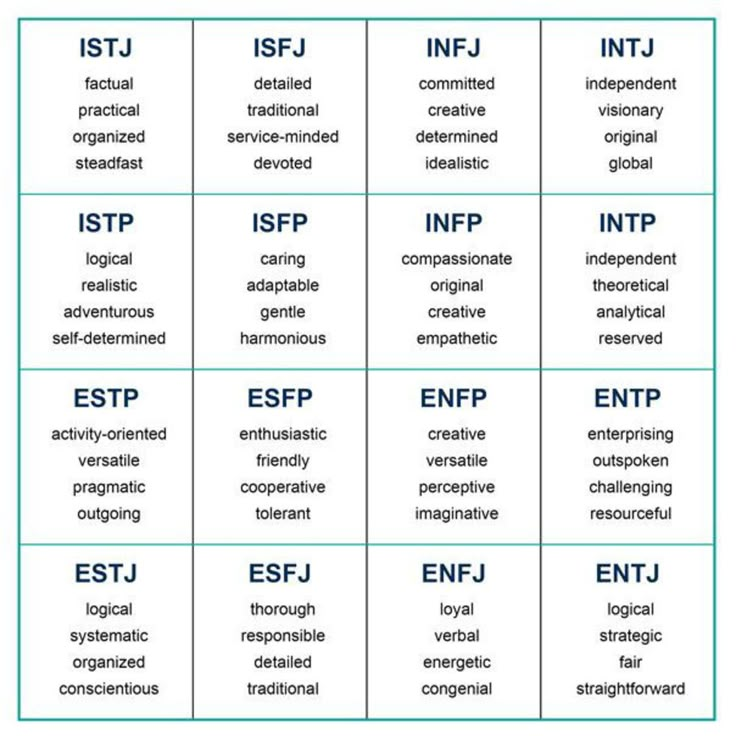 They idealize their world and relationships as an escape of their dark sides.
They idealize their world and relationships as an escape of their dark sides.
8. Types eight (challengers) have no problem to express their anger and instinctual energies. Often they do this in a physical way, like raising their voices or moving more forcefully.
What is the Feeling Center of the Enneagram?The Feeling Center is characterized by shame and covers type 2,3 and 4:
2. Types two (helpers) try to be liked by others to control their feelings of shame. They pursue themselves that they are loving people and repress their negative feelings.
3. Types three (achievers) avoid feelings of shame and fears of failure. They try to be accepted by performing well and becoming successful.
4. Types four (individualists) use their shame by focusing on their personal interests, unique talents and feelings and by fantasying a great romantic life.
What is the Thinking Center of the Enneagram?The Thinking Center is characterized by fear and covers type 5,6 and 7:
5.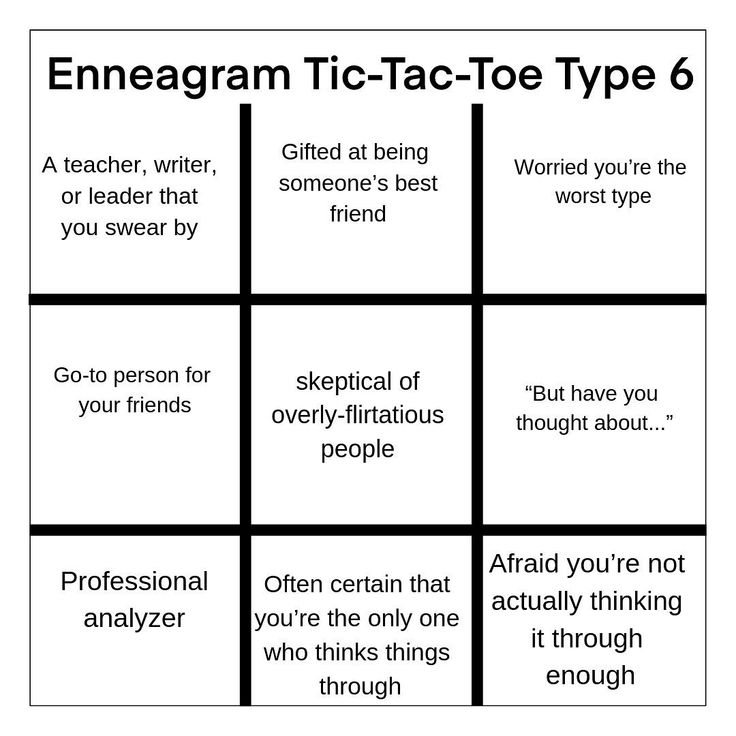 Types five (investigators) are afraid of the outer world and their capability to deal with it. They become isolated loners trying to understand the world by gathering knowledge and trusting their own minds.
Types five (investigators) are afraid of the outer world and their capability to deal with it. They become isolated loners trying to understand the world by gathering knowledge and trusting their own minds.
6. Types six (loyalists) experience the most fear among the Personalities of this Center by showing anxious and doubtful behavior. They do not trust their own minds, so to make them feel sure they constantly seek comfort outside themselves in relations, jobs, beliefs, authorities.
7. Types seven (enthusiasts) try to deny their feelings of pain or loss by distracting themselves with many activities and entertainments. They keep their mind filled up with possibilities and options in order to escape from their fears.
enneagram personality types personality center enneagram of personalities rheti reason hudson
Was this article helpful?
Yes
No
a holistic model of the transformation and development of consciousness - Eros and Cosmos
This article will focus on psychology.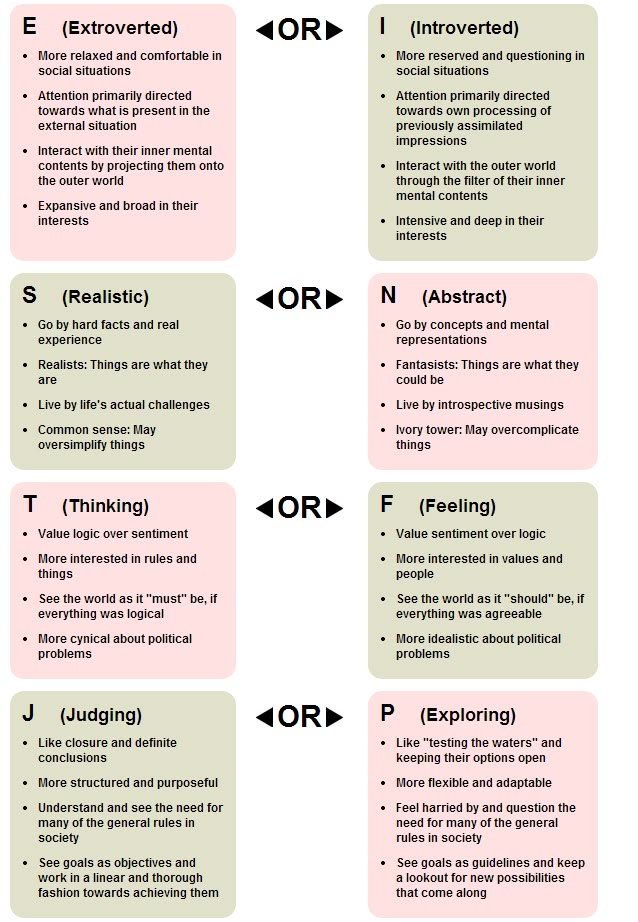 But about the psychology that people who do not have a special psychological education can easily understand, and about the psychology that can be easily integrated into the personal or professional life of any person.
But about the psychology that people who do not have a special psychological education can easily understand, and about the psychology that can be easily integrated into the personal or professional life of any person.
If we talk about psychology, then I, not a psychologist by training, have always been interested in how a person works, what motivates his actions, and how to interact with people as effectively as possible. But when I talked with those who received a special education in the field of psychology, whether they were school psychologists, psychotherapists, personnel managers or just psychologists I knew, I did not feel that they knew the answers to my questions. nine0003
Reading textbooks on psychology did not give me anything at all, except, perhaps, for a lot of specific terms that my brain refused to understand.
Therefore, probably, when I got acquainted with a model, a psychological theory that studies a person not from the point of view of what he is or seems to be, but from the point of view of his formation, motivation and possible evolution, I “got sick” with this topic.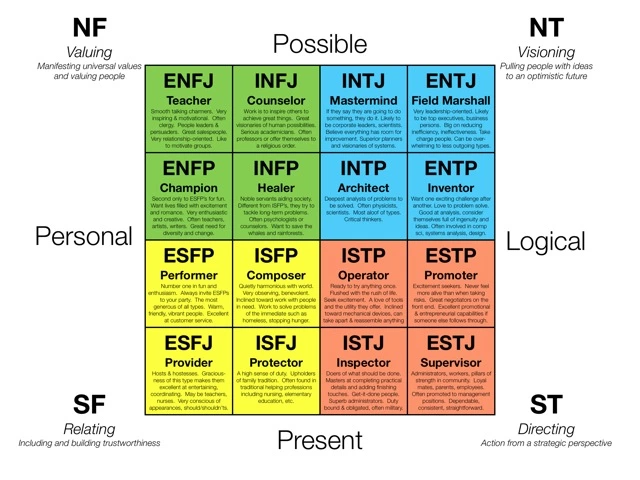 Almost ten years of study, reflection, observation, and application of the knowledge I have gained have shown me how accurate, and sometimes shockingly accurate, this model works. The result hit the "top ten", and if questions arose (and they, of course, always arose and will arise), then the answer was found with a deeper study. nine0003
Almost ten years of study, reflection, observation, and application of the knowledge I have gained have shown me how accurate, and sometimes shockingly accurate, this model works. The result hit the "top ten", and if questions arose (and they, of course, always arose and will arise), then the answer was found with a deeper study. nine0003
In addition, I clearly realized that if I, not a psychologist, can understand and effectively apply this system for the benefit of my professional activity and in my personal life, then others can do the same if they wish.
All these reasons prompted me to write this article.
So this model is called the Enneagram of Personality. Enneagram of personality, or enneagram (from Greek ennea - nine , gramma - figure), is an integral model of a person's deep motivation, aimed at his personal transformation and development. The model studies the personality of a person, namely its structure, as well as adaptive strategies and defense mechanisms, mental and emotional habits and fixations.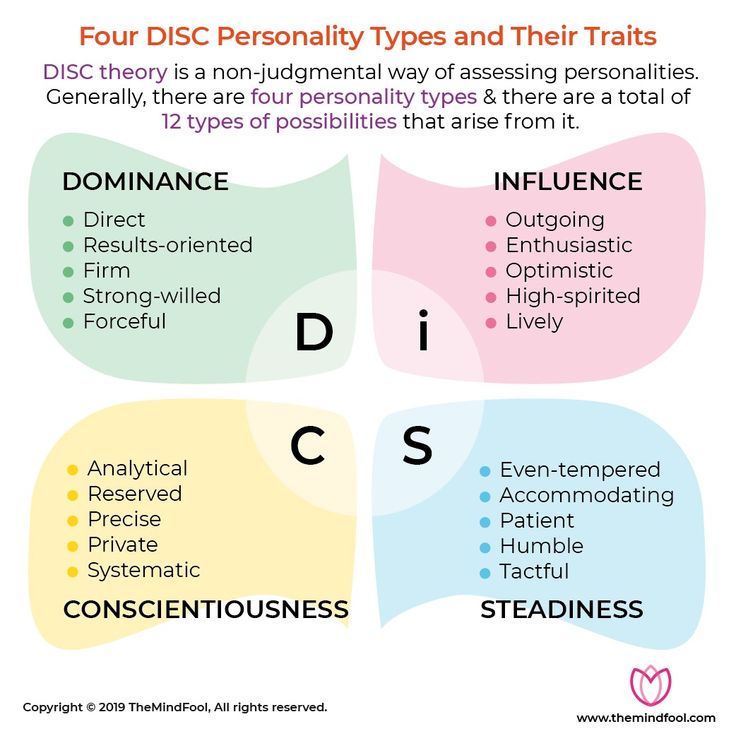 According to this model, each person has a well-defined personality structure, his own automatic reactions and some kind of “programmed” behavior, and therefore he belongs to one clearly dominant personality type (enneatype). nine0003
According to this model, each person has a well-defined personality structure, his own automatic reactions and some kind of “programmed” behavior, and therefore he belongs to one clearly dominant personality type (enneatype). nine0003
At the same time, of course, each person is unique, he is not a type of personality, but someone much larger, and no system or model can fully describe his potential and dynamics - the mysterious human life. But each person has a personality with its own structure (type). And the problem is not that a person has a type; the problem is that most often people are so identified with this type that they cannot help but behave as this type dictates to them. And practice shows that even those people who do not believe that they belong to one or another enneatype behave like such a type, and most often they are the most prominent representatives of their enneatype. And this is not a matter of faith: you may not even know about the model or not believe in it, but regardless of all this, it works, and it works exactly. nine0003
nine0003
For me, the most important thing about the model is that the enneagram is a model of development, and not just a typology. However, personality types are a necessary element of the model. After all, paradoxically, in order to understand that we are much more than our type, we must study this type, and also learn to see “in action” various manifestations of our type (our personality structure), our defense mechanisms. And only by studying our type, our automatic, “programmed” part, can we understand how much we are slaves to certain mechanical reactions and habits, and only this understanding can help us want to weaken their power over us. nine0003
By studying our type, our automatic, “programmed” part, we can understand how much we are slaves to certain mechanical reactions, and weaken their power over us
The Enneagram of Personality describes our “programmed” part (those mental , emotional and behavioral habits that "rule" our lives), which is one of the most effective and fastest ways to expand the zone of understanding of ourselves and others.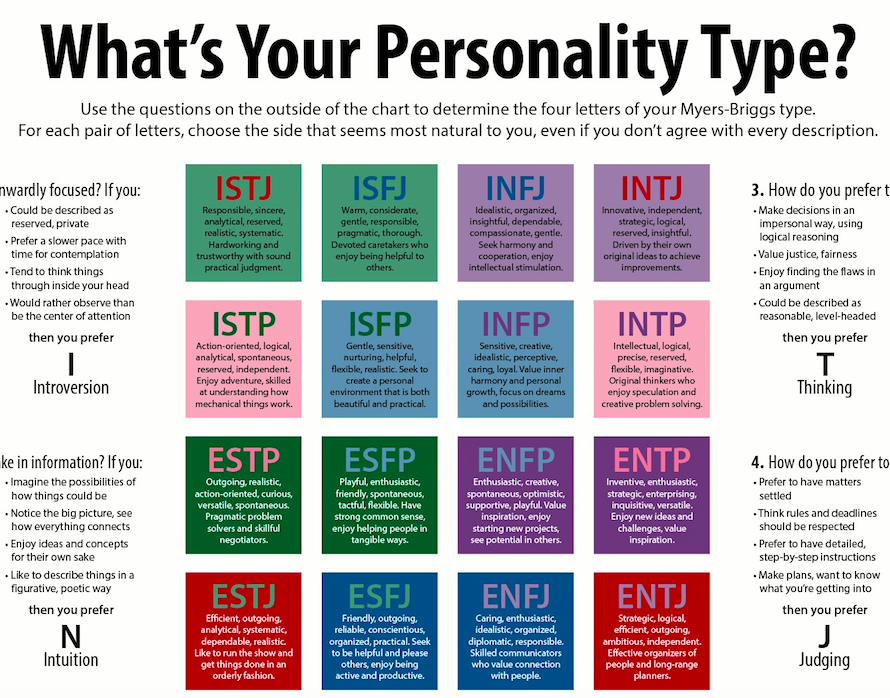 Much has been written about these habits or patterns in classical psychology, but the enneagram combines this information found in numerous sources into a coherent system of knowledge about the nine enneatypes and sets out everything in accessible language. Professional psychologists who know the enneagram say that two weeks of enneagram training can replace 4-5 years of studying psychology at the university. nine0003
Much has been written about these habits or patterns in classical psychology, but the enneagram combines this information found in numerous sources into a coherent system of knowledge about the nine enneatypes and sets out everything in accessible language. Professional psychologists who know the enneagram say that two weeks of enneagram training can replace 4-5 years of studying psychology at the university. nine0003
Manifestations of the "work" of our personality structure can be very diverse and depend on many factors and personal history of each. The Enneagram teaches how you can learn to recognize and recognize your patterns in their various manifestations, and how you can work with them and relax them, but here you cannot do without conscious practice and support, without a conscious choice to work with yourself. Recent research in the field of neuroscience, the emergence of new technologies that allow us to see changes in the human brain, show how positive the results of such work can be.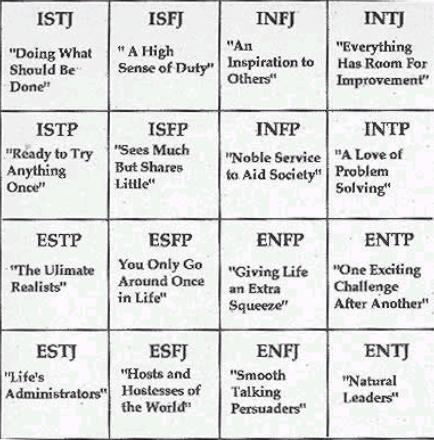 nine0003
nine0003
The Enneagram can also be called a psychological theory that looks at a person not from the point of view of pathology, but from the point of view of health, teaches a person to be in harmony with his personality structure, while gaining freedom of choice.
The modern enneagram of personality is not something that comes from a single source. It combines the symbol of the enneagram and the concept of the doctrine of personality types. The Enneagram symbol is very ancient, dating back to at least 2500 BC. e., but we do not know when and where he first appeared. Georgy Ivanovich Gurdjieff brought the symbol of the enneagram to the West. Gurdjieff and the members of the Seekers of Truth group he created traveled extensively in Egypt, Afghanistan, Greece, Persia, India and Tibet, spending much time in monasteries and remote temples, learning everything that could be learned about the ancient wise traditions. Somewhere in his travels, perhaps in Afghanistan or Turkey, Gurdjieff discovered the Enneagram symbol.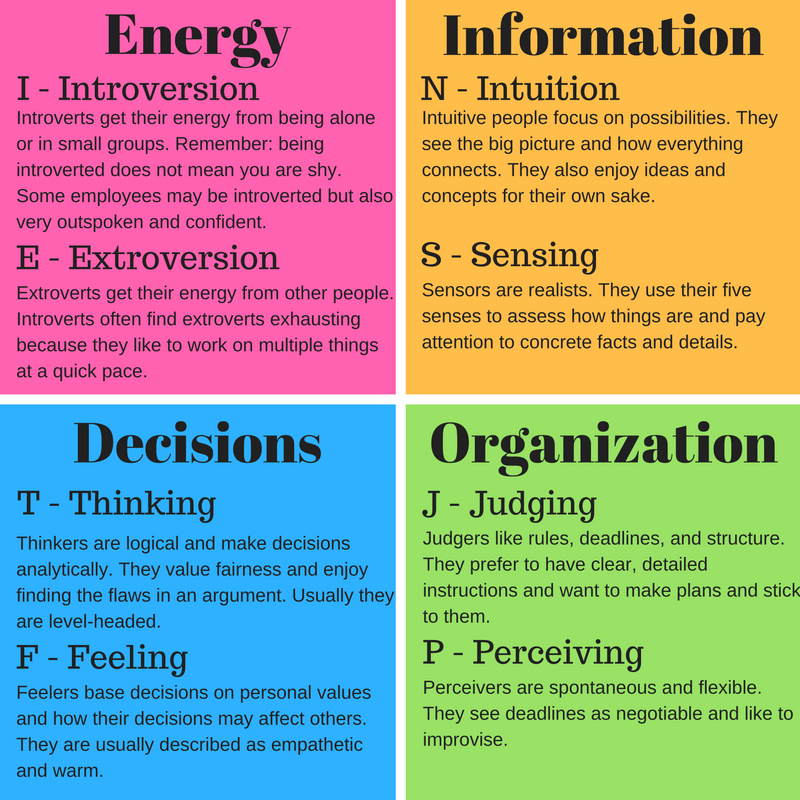 At 19In the 20th year in France, Gurdjieff founded a school of spiritual development called the Institute for the Harmonious Development of Man. There he taught self-awareness in everyday life and awareness of man's place in the universe. And he taught this to his students with the help of dances, sacred movements and the symbol of the enneagram.
At 19In the 20th year in France, Gurdjieff founded a school of spiritual development called the Institute for the Harmonious Development of Man. There he taught self-awareness in everyday life and awareness of man's place in the universe. And he taught this to his students with the help of dances, sacred movements and the symbol of the enneagram.
In their book The Wisdom of the Enneagram, Don Riso and Russ Hudson write:
life. Gurdjieff also taught that the enneagram was the central and most important symbol in his philosophy. He argued that the enneagram is the "universal symbol" or "fundamental hieroglyph of the universal language". nine0003
Thus, the theory of the enneagram taught by Gurdjieff was primarily a model of natural processes and not a psychological typology. Accordingly, Gurdjieff's enneagram is often referred to as the process enneagram .
The Enneagram of Personality (as opposed to the Enneagram of the Gurdjieff Process) was developed in the 1950s, and the founders of the model are considered to be the Latin American philosopher Oscar Ichazo and the famous psychiatrist, psychotherapist and Gestalt therapist from Chile, Claudio Naranjo, who gave the Enneagram a second birth.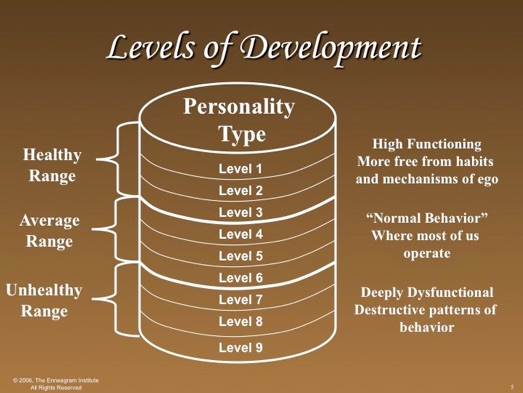 Gurdjieff's ideas and teachings influenced the development of the personality enneagram to a certain extent. In particular, the symbol of the enneagram itself became an integral part of the enneagram of Gurdjieff's process and the enneagram of the personality of Ichazo and Naranjo. nine0003
Gurdjieff's ideas and teachings influenced the development of the personality enneagram to a certain extent. In particular, the symbol of the enneagram itself became an integral part of the enneagram of Gurdjieff's process and the enneagram of the personality of Ichazo and Naranjo. nine0003
Ichazo was the first to synthesize the elements of the enneagram in a new way and began to study human personality types in relation to the patterns he saw in the enneagram. In 1970, Claudio Naranjo took a course taught by Ichazo and became seriously interested in the enneagram. He was interested in finding a connection between the enneagram and other well-known typologies. He also began work on expanding Ichazo's description of personality types. He tested the enneagram practically by studying a large number of people, interviewing them, and then analyzing the information received. He also began teaching the Enneagram course at the University of Berkeley (California, USA). In addition to Ichazo and Naranjo, other psychologists and psychiatrists have studied, tested, and extended the enneagram model of personality types.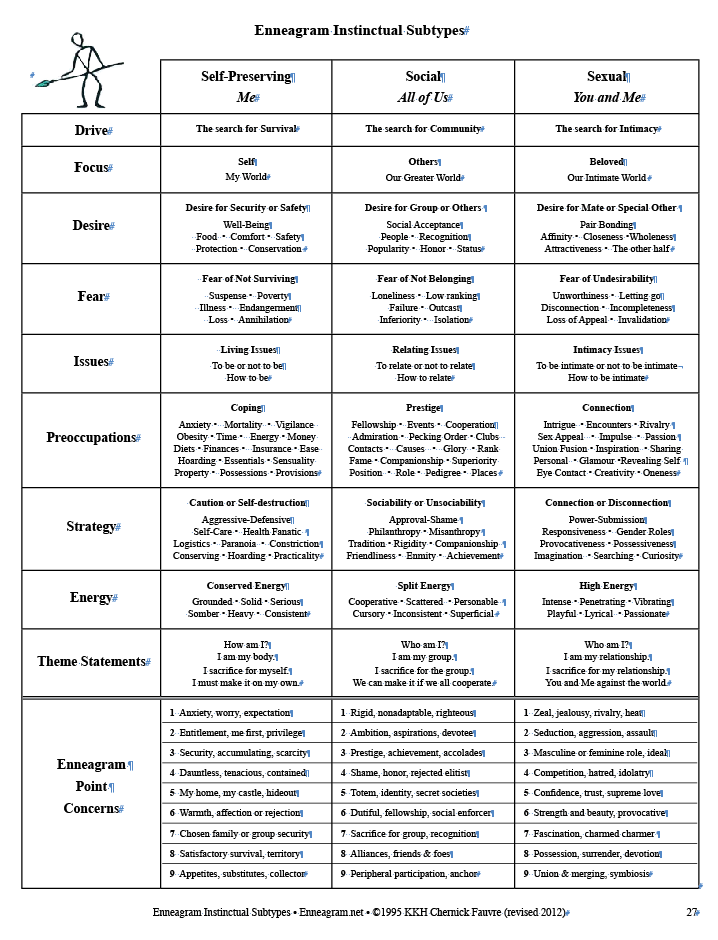 There are currently two leading Enneagram schools in the world: the Enneagram Institute (USA), founded by Don Riso and his partner Russ Hudson, and the Palmer-Daniels Oral Tradition Enneagram School, founded by Helen Palmer and David Daniels. Claudio Naranjo also continues his research and teaching on the enneagram, mainly through his SAT (Seekers of Truth) program. nine0003
There are currently two leading Enneagram schools in the world: the Enneagram Institute (USA), founded by Don Riso and his partner Russ Hudson, and the Palmer-Daniels Oral Tradition Enneagram School, founded by Helen Palmer and David Daniels. Claudio Naranjo also continues his research and teaching on the enneagram, mainly through his SAT (Seekers of Truth) program. nine0003
The enneagram is now most widely known in the United States, where it is taught as a curriculum in business schools, universities, and as a tool for recruiting and hiring, team building, working with your highest paid employees, or otherwise. way by many large and medium-sized companies and government organizations. 1 In a number of schools in the United States, knowledge of the enneagram is required not only from teachers, but also from parents of children studying at school. The Enneagram is quite well known in other countries, for example, in Canada, Great Britain, Denmark, the Netherlands, Belgium, Italy, Spain, Japan, China, Korea, and so on.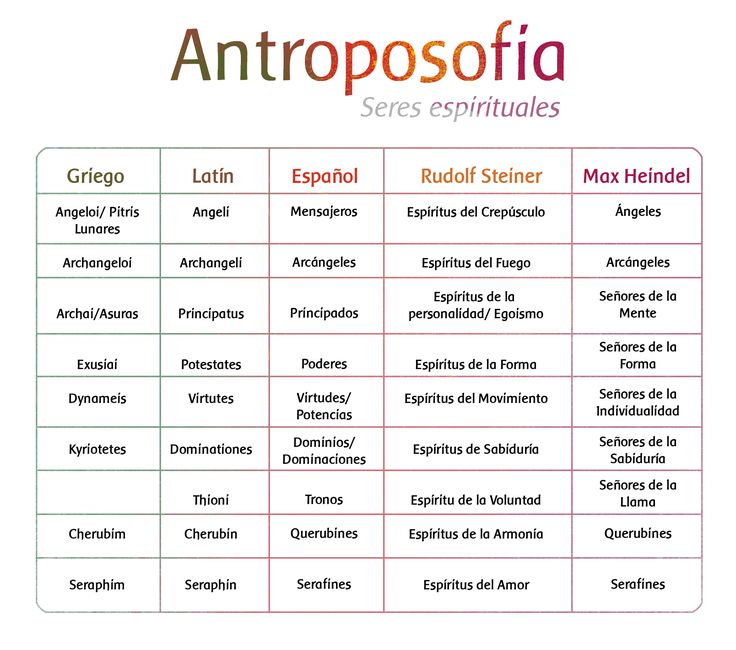 nine0003
nine0003
The Enneagram of Personality is a systems model and can be applied in various areas. Of course, this model is necessary for personal development, but besides this, it can be used in business, in coaching, in mediation, in psychotherapy, to solve the problems of interaction between parents and children, and for the professional orientation of young people. The Enneagram integrates well with models such as the Integral Approach, Spiral Dynamics, the work of Byron Katy, ThetaHealing, the Myers-Briggs and DISC models, and many others. The Enneagram does not contradict, largely confirms and is combined with academic psychology, the teachings of Freud, Jung and their followers, Maslow's theory, cultural psychology, philosophy, sociology, socionics, psychiatry and similar systems. nine0003
With the help of the Enneagram, all interactions between people can become smoother, as it gives people the tools to talk to people in the same language
With the help of the Enneagram, all interactions between people (both in the family and at work) can become more smooth, as it gives people the necessary tools to communicate with people in the same language.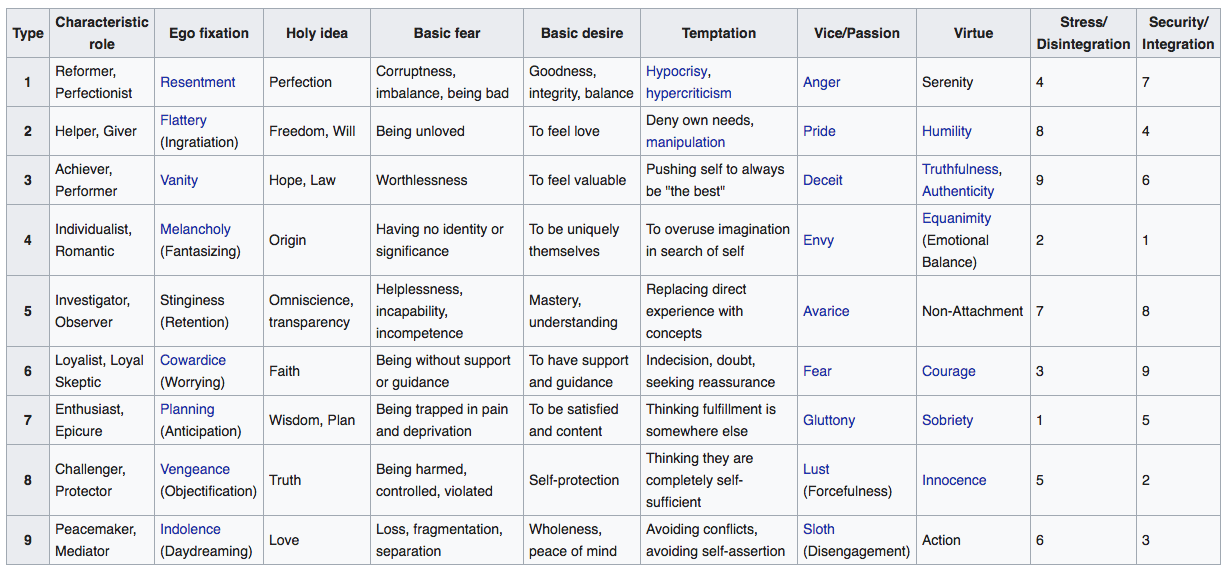 Probably everyone will agree with how important it can be for us to look deep into the inner world of our children, spouses, loved ones - to understand what motivates them, how to find the cherished “key” to them, and accept their limitations and weaknesses with compassion and kindness. . The understanding of the human psyche offered by the enneagram, especially if we take into account the vertical component of the enneagram - its levels of development - hits the target so accurately that it becomes not only a help, but also a catalyst for our growth and improves the quality of our relationships with ourselves, people and the world. The Enneagram helps to preserve valuable relationships and, in business, valuable employees by increasing their job satisfaction. It can also be used to select the right person for the job, work with staff to help them perform at their best, improve conflict management, improve employee negotiation skills, etc. All this leads or can lead to an improvement in the psychological climate in the team, an increase in labor productivity and a reduction in stressful situations.
Probably everyone will agree with how important it can be for us to look deep into the inner world of our children, spouses, loved ones - to understand what motivates them, how to find the cherished “key” to them, and accept their limitations and weaknesses with compassion and kindness. . The understanding of the human psyche offered by the enneagram, especially if we take into account the vertical component of the enneagram - its levels of development - hits the target so accurately that it becomes not only a help, but also a catalyst for our growth and improves the quality of our relationships with ourselves, people and the world. The Enneagram helps to preserve valuable relationships and, in business, valuable employees by increasing their job satisfaction. It can also be used to select the right person for the job, work with staff to help them perform at their best, improve conflict management, improve employee negotiation skills, etc. All this leads or can lead to an improvement in the psychological climate in the team, an increase in labor productivity and a reduction in stressful situations.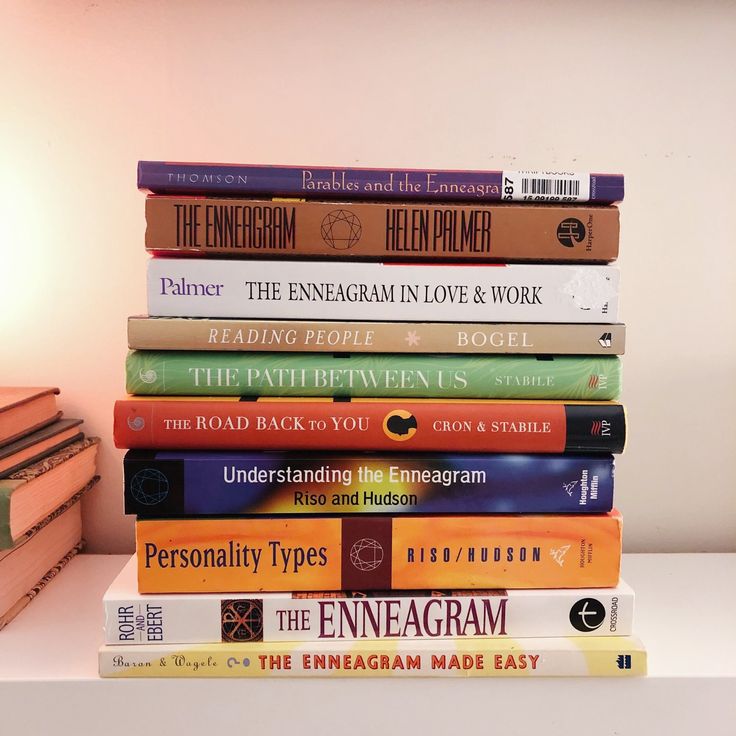 nine0003
nine0003
The following is a very brief description of personality types as taught by the enneagram of personality, as well as a few tips for dealing more effectively with people of each type. At the same time, when reading a brief description of enneatypes, it is necessary to be aware of the following:
- The description does not give a complete understanding of the type (a complete description and understanding of types is possible with a deep study of the model).
- The most accurate way to determine your personality type is to pass tests on the enneagram. There are quite a lot of them now, but it is possible to single out a validated (in English) Indicator of personality types according to the enneagram according to the methodology of Riso and Hudson ( Riso-Hudson Enneagram Type Indicator , or RHETI) in Russian translation by M. Kaldina (this test can be taken online in English at enneagraminstitute.com, or found in Russian in the book by Don Riso and Russ Hudson “Determining Your Personality Type” in Russian translation by M.
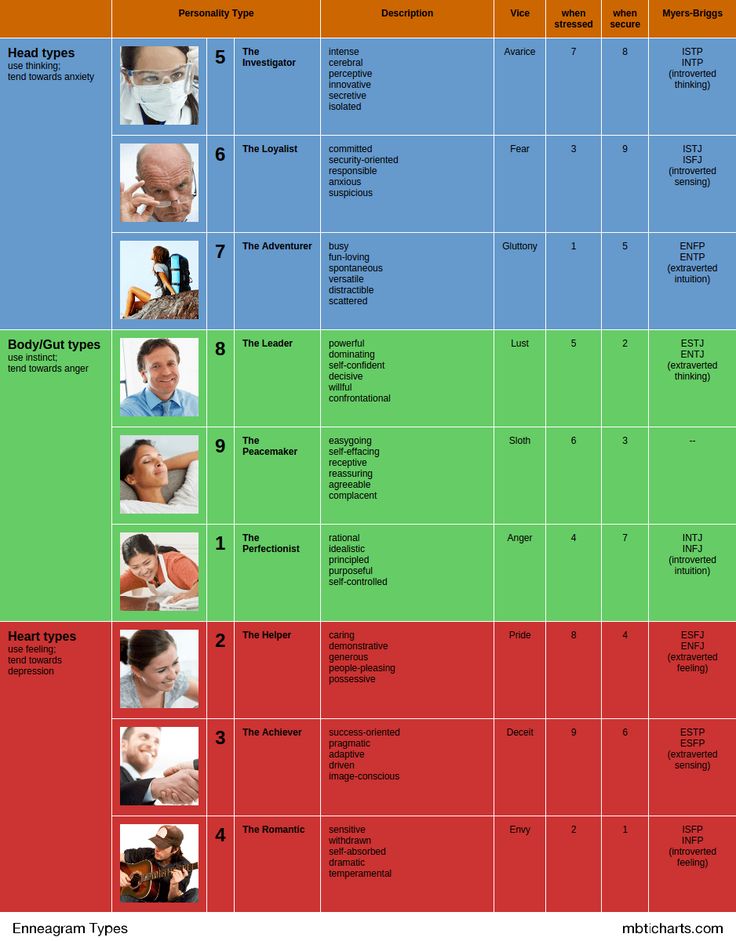 Kaldina and M. Kozlova), as well as the HPEI test by Philippe Halin and Jacques Premont, Belgian enneagram experts (this test is scientifically validated in several languages, including Russian) - www.enneagramma. en/hpei/. nine0072
Kaldina and M. Kozlova), as well as the HPEI test by Philippe Halin and Jacques Premont, Belgian enneagram experts (this test is scientifically validated in several languages, including Russian) - www.enneagramma. en/hpei/. nine0072
- Some people will be able to determine their personality type fairly quickly even after reading this brief description alone, while for other people it may be difficult to determine their type.
- When determining your personality type, it is necessary to take into account that to one degree or another in life we use adaptive strategies of all types, but when applying strategies of “our” type, we are real experts. The Enneagram of Personality describes a number of important factors that influence why each person, to one degree or another, exhibits some of the traits and strategies of other personality types (traits of the parent type, the so-called "lines of connection", "wings", "tritypes", etc.). e.)
- Patterns inherent in a particular type of personality work regardless of a person’s gender, race, specific national or family traditions, upbringing, intellectual or other abilities, however, all these factors can be important in how a person manifests certain traits inherent in their type.
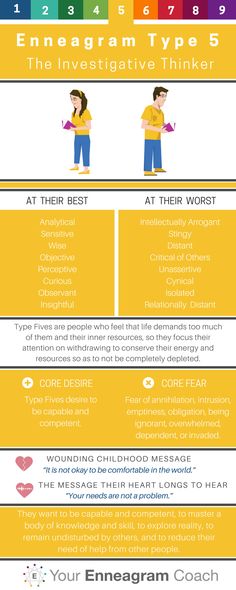
- Not all manifestations of our basic type are observed in us all the time. This is due to the fact that we are constantly changing throughout life and over time (or even within one day) we can change the level of development (level of awareness, level of emotional competence) at which we are. nine0072
- Although each type has its own conventional name, the Enneagram of Personality uses numbers to represent types because numbers are a neutral category. This is because the enneagram of personality does not speak of "bad" or "good" types: neither type is worse or better than the other; also representatives of each type can show both healthy and unhealthy qualities of their type.
- The description of types below does not take into account categories such as lines of connection, "wings", children's subconscious influences, centers and their balance / imbalance, levels of development, instincts, etc. All these and some other elements are part of the enneagram model of personality and their knowledge helps to more holistically understand the system and its logic, and begin to “feel” each of the personality types (there are many subtypes that give a person his individuality, while maintaining the patterns inherent in the dominant personality type in a person), their unity and diversity.
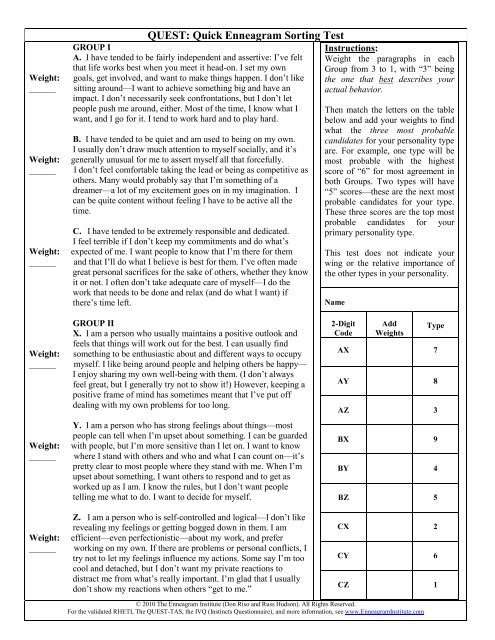 nine0072
nine0072
Type 1. Reformer
Ones can be described as principled, purposeful, responsible, organized, disciplined people, detail-oriented, as well as polite people with good self-control. They want to be a model of decency, clear logic and correct behavior. They usually focus on rules, procedures, always trying to make sure they are doing "the right thing". They are motivated by the pursuit of excellence.
"I just need to correct this grammatical error..." (© Clare Cherikoff)To communicate effectively with these people, you need to be honest with them and consider their values. With them, it can be important to define boundaries, and within those boundaries, allow them to do whatever they want. Appreciate their methodicalness, as their methodical effort, attention to detail, and organization can mean you don't have to deal with all those details.
Type 2. Helper
Twos can be called caring, warm, noble, generous, altruistic, relationship-oriented people.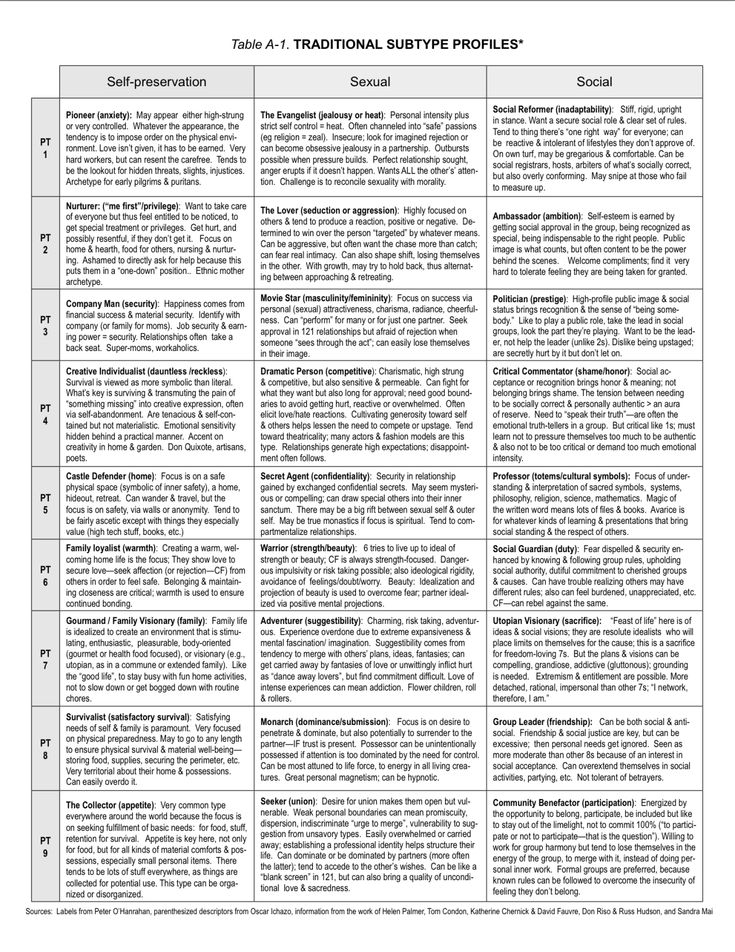 They are often selfless, considerate and caring. Twos focus on making sure other people get what they need; they connect easily and they like to find things that connect you with other people. They are motivated by the desire for connection. nine0003 “One more gift from me, and you are mine forever” (© Clare Cherikoff)
They are often selfless, considerate and caring. Twos focus on making sure other people get what they need; they connect easily and they like to find things that connect you with other people. They are motivated by the desire for connection. nine0003 “One more gift from me, and you are mine forever” (© Clare Cherikoff)
In relationships with people of this type, one must understand that they lose touch with their feelings and do, is dictated by their desire to receive recognition and praise. If, for example, you don't react quickly enough to their care, they can become aggressive and literally "pounce" on you. When interacting with them, you need to let them know that you need them in your life, but you do not need them to take over your life. nine0003
Type 3. Achiever
Threes can be described as efficient, confident, productive, results-oriented and success-motivated people, they can easily adapt to the situation and are a role model. They work hard to exceed all standards and be successful in everything they do. They greatly value productivity and the need to be a winner wherever they are. They are motivated by the desire to be outstanding.
They greatly value productivity and the need to be a winner wherever they are. They are motivated by the desire to be outstanding.
People of this type expect to be noticed and admired. They need a lot of attention. No other type rejoices so much when they are admired, but if you do not consciously praise them, then they will feel it, and will think of reasons why you are against them. They can very easily turn into your enemy, so it makes sense to befriend them with a little praise, especially a well-deserved one. They will move mountains if they understand that the project they have been assigned will increase their status or social level. nine0003
Type 4. Individualist
Fours can be called introspective, mysterious, feeling, emotionally expressive, creative, unique people. They usually approach life creatively, choosing new and interesting paths. They lean towards things and experiences that are elegant, sophisticated and out of the ordinary.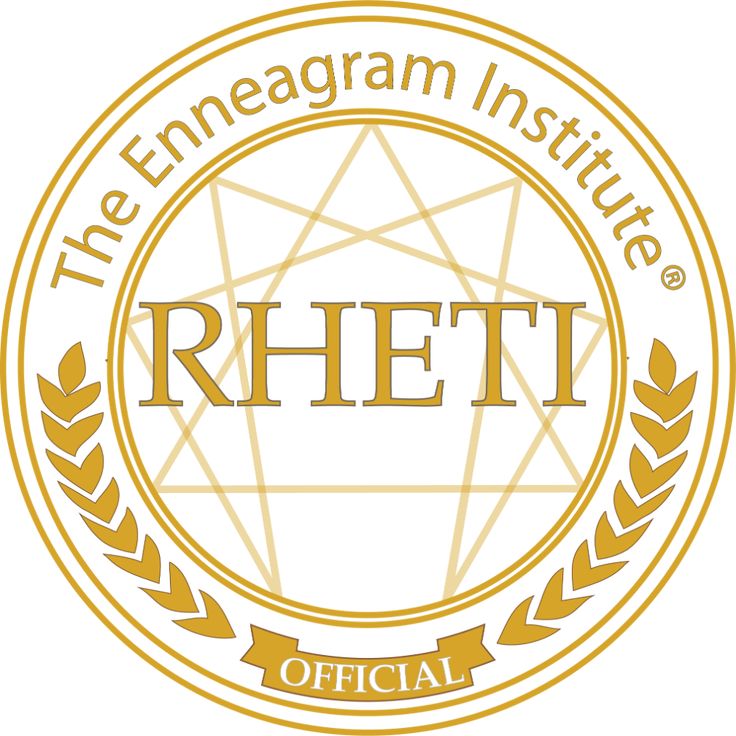 They are motivated by the desire to be unique.
They are motivated by the desire to be unique.
In order to competently build your relationships with these people, you need to understand that they need a lot of delicate and tactful encouragement. Sometimes they perceive even this badly, as they can understand it as a hidden criticism, so it is necessary to pay attention to what is and is you tell this type of people. You must be sure that if your intention is to encourage, then you really do not have any ulterior motives. They will instantly feel any level of anger, criticism or other negative feelings you have towards them and will focus on that instead of hearing the positive information you are trying to convey to them.
Type 5. Thinker
Fives can be called introverted, deep, observant, focused, insightful people. They are used to relying on themselves, on their thoughts and analytical abilities. They are observant, logical and often closed.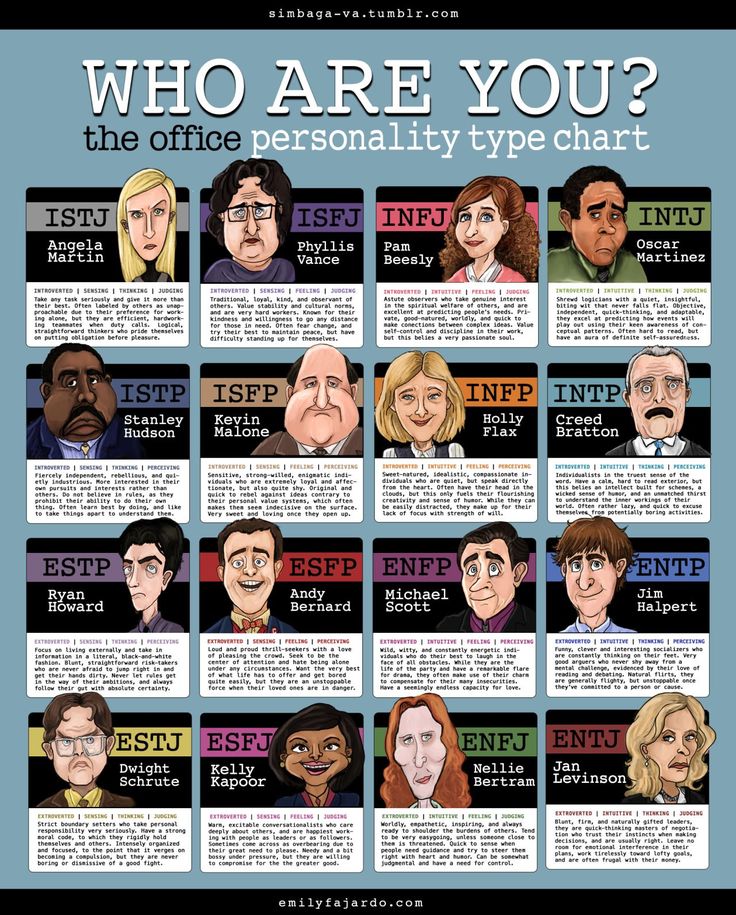 They focus on problem solving, come up with innovative ideas, and gather information. They are motivated by the desire to be detached. nine0003 "I'm thinking about statistics and analytical procedures, and he wants me to cook him dinner!" (© Clare Cherikoff)
They focus on problem solving, come up with innovative ideas, and gather information. They are motivated by the desire to be detached. nine0003 "I'm thinking about statistics and analytical procedures, and he wants me to cook him dinner!" (© Clare Cherikoff)
When communicating with them, you will achieve greater success if you show real competence in the issue you are discussing with them, adequately answer their complex, sometimes provocative, questions on the merits of the topic you raised. However, this type of person can be difficult to communicate rationally because their irrational ideas and imaginations are what cause them problems with others. It is very unproductive and even dangerous for business to ridicule their ideas. The best thing to do is just to listen to them to get an idea of what they think of the world, occasionally saying something like: “I understand how you could come to these conclusions, however, maybe other conclusions can be do if…” Often their misunderstanding of the situation is dictated by the fact that they have the wrong first premise.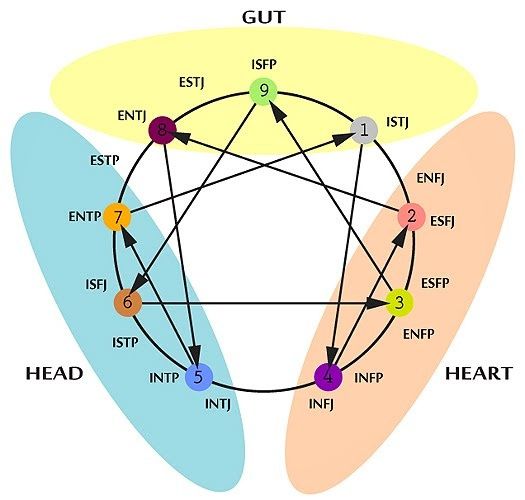 In this case, it is necessary to carefully but firmly ascertain their background information until they themselves realize their mistake. nine0003
In this case, it is necessary to carefully but firmly ascertain their background information until they themselves realize their mistake. nine0003
Type 6. Loyalist
Sixes can be called dedicated, responsible, cooperative people. They can be very controversial - soft or hard, followers or leaders, protectors or rebels. They often find security when they become part of something larger than themselves, such as a group or tradition. They are careful, responsible and protect the welfare of the group. They focus on maintaining continuity, tradition and cohesion. They are motivated by the desire for security. nine0003 “Is she the one? Not sure. What if it's not? Maybe I need to be with Carol or Jane…” “Is this someone I can be faithful to? I'm not sure.” (© Clare Cherikoff)
This type of person needs constant support to clear their doubts. When communicating with them, avoid lengthy calls for improvement or logical debates. Although this is also necessary in dealing with people of other types, but when dealing with Sixes, it is necessary to pay special attention to building trust, to efforts aimed at calming them down.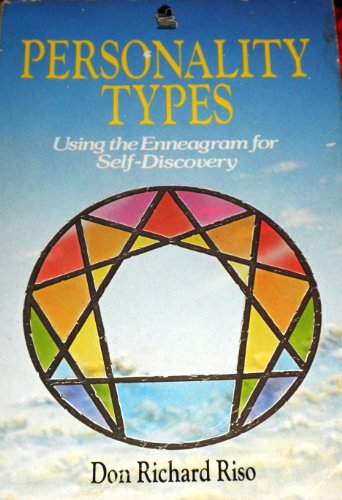 It is counterproductive to convince these people of what a revolutionary change in the market the project they are working on will bring. nine0003
It is counterproductive to convince these people of what a revolutionary change in the market the project they are working on will bring. nine0003
Type 7. Enthusiast
Sevens can be called versatile, fast, energetic, optimistic, spontaneous, busy people. They do not like restrictions and are quite prone to adventurism. They are always upbeat, enthusiastic, optimistic and curious. They focus on the possibilities and options, on being able to entertain/inspire people. They are motivated by the desire to be joyfully excited.
“Wow, she's in tears again! Tahiti, wait for me, I'm packing my bags!" (© Clare Cherikoff) It is easy for people of this type to sell a new product and a new idea, but at the same time, they cannot be strongly counted on that they will not change their mind or remain true to their supplier or true to this new idea, so even newer things can completely capture their attention . When building relationships with these people, we must remember that they can either be extremely cheerful, wonderful people with whom it is pleasant to be together, or if they become even a little unhealthy, they can get very bored.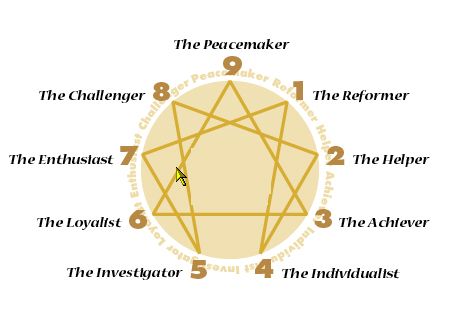 They don't seem to have a sweet spot. Therefore, in both personal and professional life, they need very strict and clear boundaries. nine0003
They don't seem to have a sweet spot. Therefore, in both personal and professional life, they need very strict and clear boundaries. nine0003
Type 8. Challenging
Eights can be called strong, determined, confident, strong-willed, independent people. They are straightforward, protect the weak, are not afraid of confrontation, are not afraid to go against the flow. They are initiative people, action oriented, they like to be in charge. They focus on getting the job done and on overcoming the obstacles they encounter along the way. They are motivated by the desire to be strong.
“Angry? Do you think I'm angry? Dog bullshit. This is passion!" (© Clare Cherikoff) If you communicate with a representative of this type, then keep in mind that they want a specific and practical approach to solving any problem and react negatively to manipulation and people who chatter and do not know how to clearly express their thoughts. If you are strong enough and independent enough to compete with the Eight one on one, giving as much as you receive, your cooperation with him or her will be exciting and rewarding in many ways.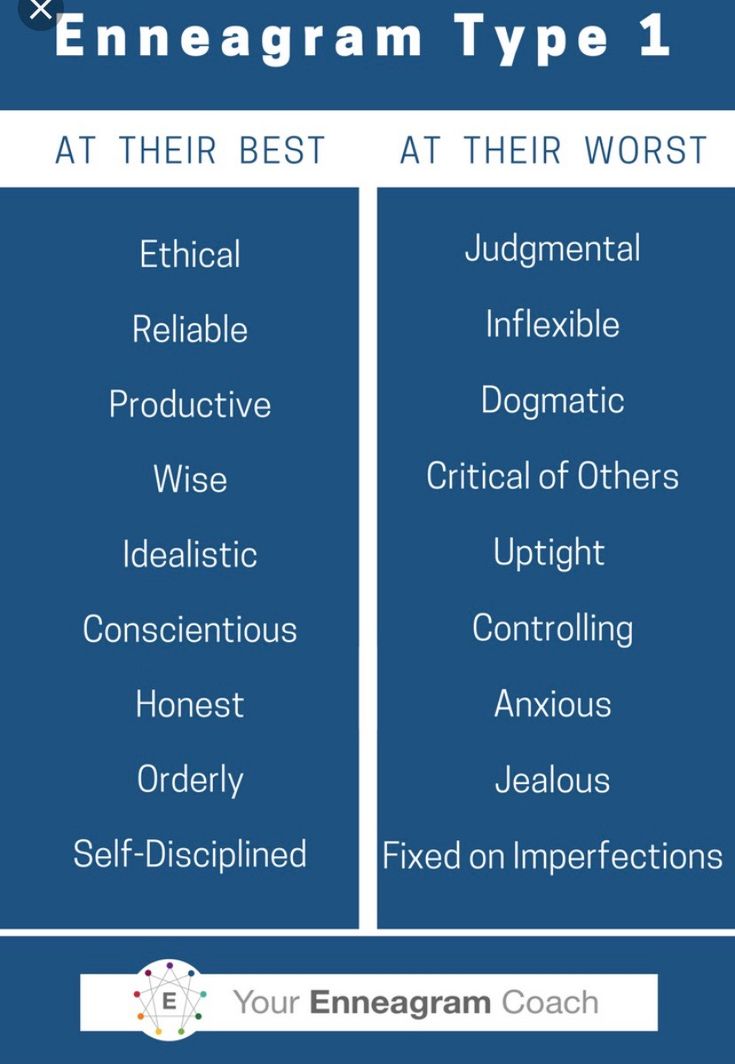 But if you often fall into addictions, or your values are the opposite of theirs, beware: as a result of relationships with them, you will lose more than you will gain. nine0003
But if you often fall into addictions, or your values are the opposite of theirs, beware: as a result of relationships with them, you will lose more than you will gain. nine0003
Type 9. Peacemaker
Nines can be called modest, calm, receptive, encouraging people, they usually have an easy character. They easily see and understand different points of view, try to keep everything simple and smooth. They focus on maintaining a sense of inner harmony by minimizing their own needs and focusing on the needs of others. They are motivated by the desire to be peaceful.
"I'm just more comfortable when she takes the lead" (© Clare Cherikoff) Change in any form poses a threat to type 9 people, so they should not be expected to change easily and quickly, if at all. Therefore, one should not demand changes from them without a special reason, but one should fight only for those changes that are really important. In addition, when communicating with them, you should not pay attention to what they say, but rather look at their non-verbal behavior.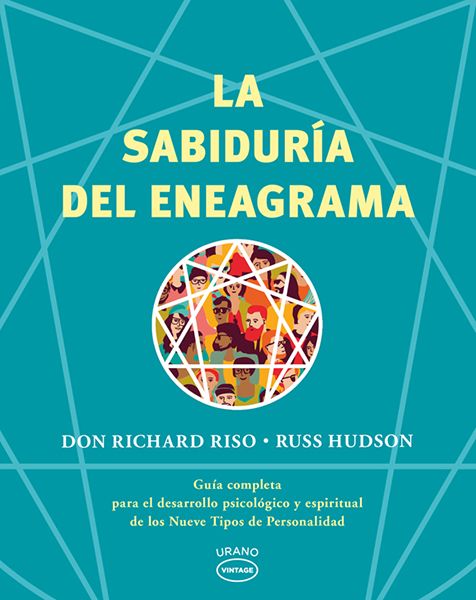
In conclusion, I would like to say that I personally consider the enneagram of personality to be one of the best models of development and transformation. However, when deciding whether you personally should study the enneagram for your own development, the most important questions you should ask yourself are: “Does this apply to me? Can this material help me understand other people better? Do I want to know the whole truth about myself by looking behind the veil of my defensive reactions and adaptive strategies? If you answered “yes” to these questions, then you should go on a journey with the enneagram. nine0003
And if you do decide to start studying the enneagram, here are a few things that are important to know:
- Relate everything you learn or read to your own experience. The Enneagram is not a theory: it is meant to help you explore yourself, work on yourself, transform yourself.
- Do not try to correct other people with the help of the enneagram, no matter how great your desire.
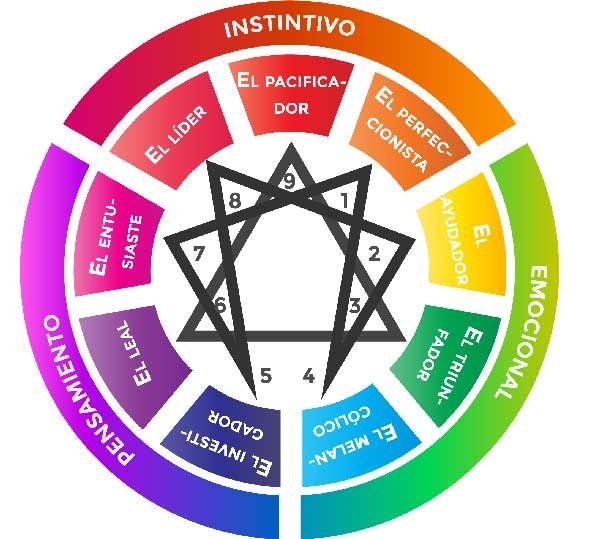
- Do not use the enneagram as a weapon of manipulation or to judge a person. Any stereotyped judgments can harm. nine0072
- Avoid the temptation to understand the enneagram intellectually, live its lessons, integrate the knowledge into yourself.
- Do not use the enneagram as the deciding factor in your hiring decisions.
The author of the article conducts an 8-month enneagram practical online course, accredited by the International Enneagram Association: "Piloting Self-Knowledge and Communication with the Enneagram Model". There is still an opportunity to enroll in this educational course. nine0020
- e.g. Amoco, AT&T, Avon Products, Boeing Corporation, The DuPont Company, e-Bay, Prudential Insurance (Japan), General Mills Corporation, General Motors, Alitalia Airlines, KLM Airlines, The Coalition of 100 Black Women, General Mills, Kodak, Hewlett Packard, Toyota, Procter & Gamble, International Weight Watchers, Reebok Health Clubs, Motorola, Prudential Insurance, Sony.
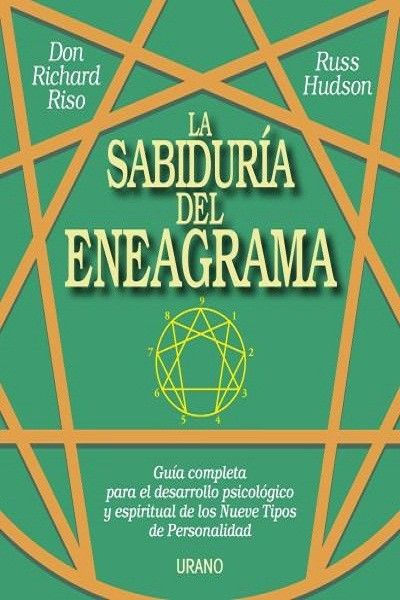 ↩
↩
Book "The Wisdom of the Enneagram. A Complete Guide to Psychological and Spiritual Growth for the Nine Personality Types" Riso DR, Hudson R
- Books
- Fiction
- non-fiction
- Children's literature nine0072
- Literature in foreign languages
- Trips. Hobby. Leisure
- art books
- Biographies.
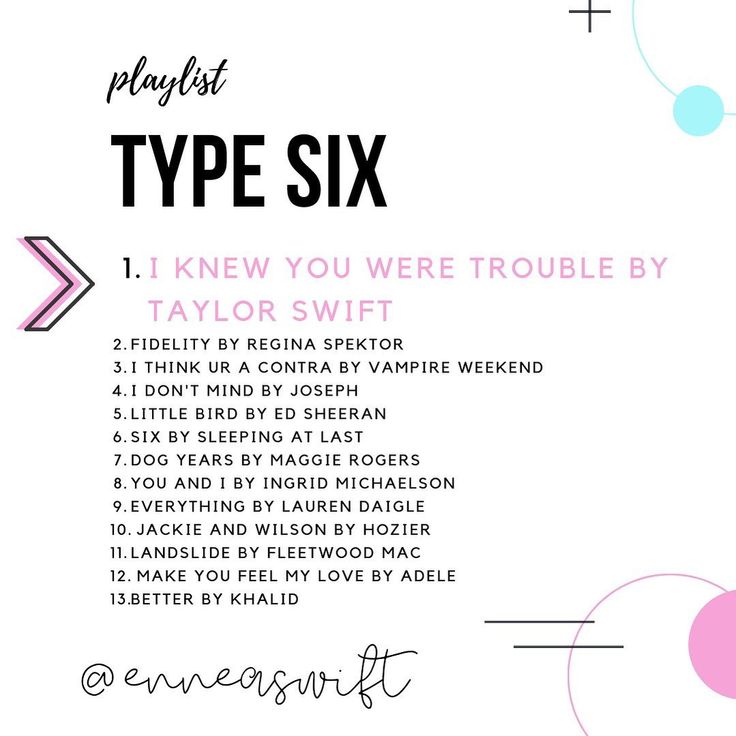 Memoirs. Publicism nine0072
Memoirs. Publicism nine0072 - Comics. Manga. Graphic novels
- Magazines
- Print on demand
- Autographed books nine0072
- Books as a gift
- Moscow recommends
-
Authors • Series • Publishers • Genre nine0003
- EBooks
- Russian classics
- detectives
- Economy nine0072
- Magazines
- Benefits
- History
- Policy
- Biographies and memoirs nine0072
- Publicism
- Audiobooks
- Electronic audiobooks
- CDs nine0072
- Collector's editions
- Foreign prose and poetry
- Russian prose and poetry
- Children's literature nine0072
- History
- Art
- encyclopedias
- Cooking.
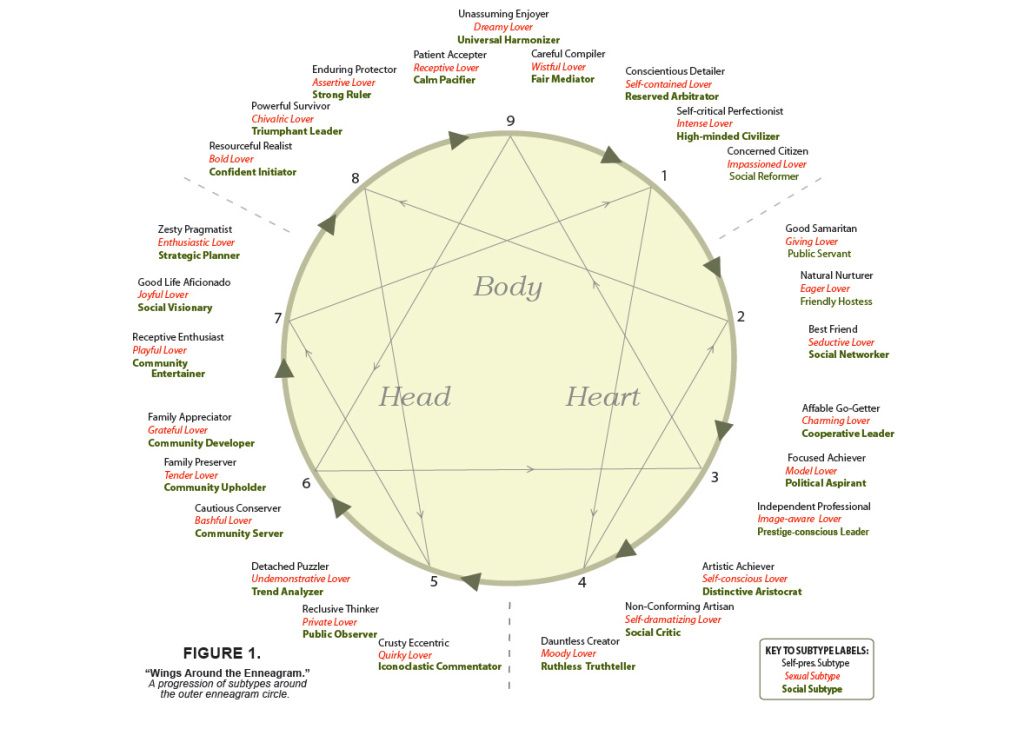 Winemaking nine0071 Religion, theology
Winemaking nine0071 Religion, theology
- All topics
- Children's literature nine0072
- Collected works
- Art
- History of Russia until 1917
- Fiction. foreign nine0072
- Fiction.
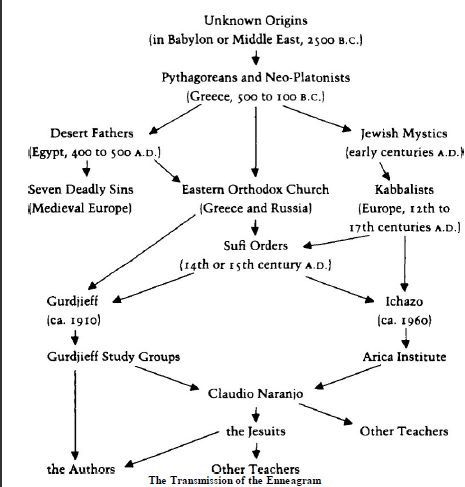
Learn more

